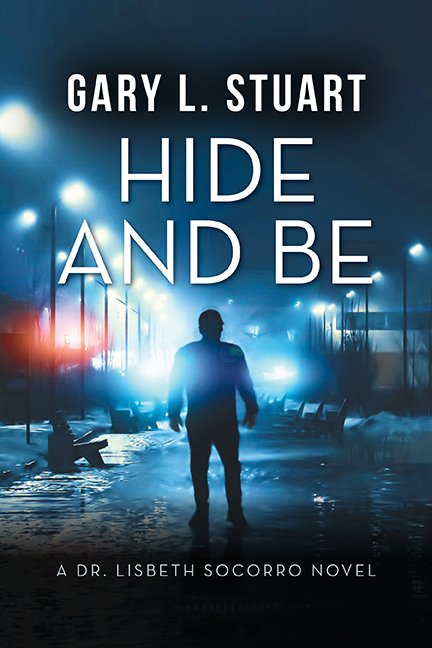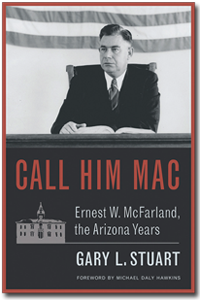The U.S. Capitol riot on January 6, 2021, prompted by President Donald Trump after his loss in the 2020 presidential election, and the subsequent trials of President Trump’s supporters and right-wing militia group leaders accused of committing criminal activities, including those of rioters who committed violent attacks on Capitol police during the insurrection, have brought up a question many of us never had to consider: Has the Capitol been stormed before? It also brings up the ethicality of militias and the malice they bring to today’s political structures.
Though the Jan. 6 attack and insurrection by a pro-Trump mob on the Capitol building was a monumental moment in the history of the United States, it wasn’t the first time the Capitol building, or the U.S. Senate were attacked in an act of violent protest or domestic terrorism. In the nineteenth and the twentieth centuries, there were several notable events during which the Capitol was bombed or invaded, resulting in injuries and fatalities.[1]
At first blush, writing about the ethics of denial and deception seems unrelated to ethical writing. But if you’re U.S. Military, Denial and Deception play essential roles in war strategy, tactics, success, failure, and jargon. There is an ethical element because commanders must consider ethics when conducting military operations. Ethics is a crucial area of research and study as the military moves into a world hyper aware of political correctness, international opinion, and legal issues. When viewing denial and deception through the lens of ethics and morality, do the ends justify the means? . . . Deception, in broad terms, is the manipulation of information and perceptions to induce the target of that deception to take or not take an action, thereby benefiting the deceiver. Denial includes methods used to conceal state and military secrets, particularly from foreign intelligence collection. . .[2]
The military acronym is D&D. “In the D&D framework, denial and deception are seen as distinct but complementary endeavors. Denial most often involves security and concealment to prevent foreign agents, photographic surveillance, electronic monitoring, or even the media from revealing secretive diplomatic or military matters. Deception is the construction of a false reality for the adversary through intentionally ‘leaked’ false information, false stories implanted in the media, dummy or decoy structures or military formations, or numerous other measure.”
In today’s divided government, frozen Congress, and the reality of anti-government non-sanctioned, and privately organized militias operating nationwide, D&D is menacing. To put this in context and take a surface-level assessment of militia ethics, we should start by defining the term, militia. “During colonial America, all able-bodied men of a certain age range were members of the militia, depending on each colony’s rule. Individual towns formed local independent militias for their own defense. The year before the US Constitution was ratified, The Federalist Papers detailed the founders’ paramount vision of the militia in 1787. The new Constitution empowered Congress to “organize, arm, and discipline” this national military force, leaving significant control in the hands of each state government. Today, as defined by the Militia Act of 1903, the term ‘militia’ is used to describe two classes within the United States: (1) Organized militia – consisting of State Defense Forces, the National Guard and Naval Militia. (2) Unorganized militia – comprising the reserve militia: every able-bodied man of at least 17 and under 45, not a member of the State Defense Forces, National Guard, or Naval Militia. Congress has organized the National Guard under its power to “raise and support armies” and not its power to “Provide for organizing, arming and disciplining the Militia”. Congress chose to do this in the interests of organizing reserve military units not limited in deployment by the strictures of its power over the constitutional militia, which can be called forth only “to execute the laws of the Union, suppress insurrections and repel invasions.”[3]
That language, “suppress insurrections and repel invasions” has taken on new meaning since January 6, 2021. Some insurrectionists and invaders called themselves militia. They are better identified as members of the Militia Movement. They were not military, law enforcement, government sanctioned, or licensed. They claim militia status while damming and condemning government, members of congress and elected officers of the federal government.
They have a Wikipedia page. “The American militia movement is a term used by law enforcement and security analysts to refer to a number of private organizations that include paramilitary or similar elements. These groups may refer to themselves as militia, unorganized militia, and constitutional militia. One group, calling themselves “Three Percenters,” patrolled Emancipation Park in Charlottesville, Virginia during the 2017 Unite the Right rally. And groups such as the Posse Comitatus existed as early as the 1980s. The movement gained momentum after standoffs with government agents in the early 1990s. By the mid-1990s, such groups were active in all 50 US states, with membership estimated at between 10,000 and 250,000.”[4]
Names, identities, and police records exist but motive and capacity to do harm is difficult to pin down, much less understand. “The militia movement is a right-wing movement that arose following controversial standoffs in the 1990s. It inherited paramilitary traditions of earlier groups, especially the conspiratorial, anti-government Posse Comitatus. The militia movement claims that militia groups are sanctioned by law but uncontrolled by government; in fact, they are designed to oppose a tyrannical government. The movement’s ideology has led some adherents to commit criminal acts, including stockpiling illegal weapons and explosives and plotting to destroy buildings or assassinate public officials, as well as lesser confrontations.”[5]
The Center for Strategic and International Studies is a bipartisan, nonprofit policy research organization dedicated to advancing practical ideas to address the world’s greatest challenges. In August 2021 they released a study titled Examining Extremism: The Militia Movement.[6] “Militia groups recently captured the public’s attention following their presence at racial justice protests in 2020 and participation in the January 6, 2021, Capitol attack. Yet, the modern militia movement has operated in the United States for the past three decades, and the inspiration for these armed groups’ beliefs and methods date back to at least the mid-twentieth century. This piece outlines the history of the U.S. militia movement, as well as these groups’ ideology, organizational structure, and tactics and targets. It concludes with an assessment of the large and escalating threat militias pose in the United States today, which is driven by alleged existential threats from government overreach and exacerbated by an increased blending of conspiracy theories and perceived legitimization from authority figures.”
The CSIS study carefully noted the militia movement’s most recent growth and its D&D mentality. “A third wave in the militia movement began during the 2016 presidential campaign and subsequent Trump presidency. Similarly, this growth was enabled by what militia members perceived as a more permissive, or even legitimizing, political environment. Militias were emboldened by policy changes and rhetoric that they perceived to validate their beliefs . . . Conspiracy theories claiming that the 2020 election of President Joe Biden was illegitimate and was instead won by Donald Trump drove a further increase in militia activity—including participation in the Stop the Steal movement. Members of various militia groups, including major national umbrella groups or ideologically linked networks such as the Oath Keepers, Proud Boys, and the Three Percenters, also participated in the January 6, 2021, attack on the U.S. Capitol.”
Oath Keepers is an American far-right anti-government militia. “Its leaders have been convicted of violently opposing the government of the United States, including the transfer of Presidential power as prescribed by the US Constitution. It was incorporated in 2009 by founder Elmer Stewart Rhodes, a lawyer and former paratrooper. In November 2022, Rhodes and another leader of the organization were convicted of seditious conspiracy for their actions around the January 6 United States Capitol attack. Along with three other leaders, they were also convicted of obstruction and other felonies.”[7]
Oath Keepers mimics the deny and deceive tactics of legitimate federal and state organizations. “They encourage members to disobey orders which they believe would violate the U.S. Constitution. Research on their membership determined that two-thirds of the Oath Keepers are former military or law enforcement, and one tenth are active-duty military or law enforcement. Most research determined the Oath Keeper membership to be approximately 5,000 members, while leaked data showed Oath Keepers‘ rosters claiming membership of 38,000.[8]
The Proud Boys were established in the midst of the 2016 presidential election by VICE Media co-founder Gavin McInnes. They are self-described Western chauvinists. “Rank-and-file Proud Boys and leaders regularly spout white nationalist memes and maintain affiliations with known extremists. They are known for anti-Muslim and misogynistic rhetoric. Proud Boys have appeared alongside other hate groups at extremist gatherings such as the “Unite the Right” rally in Charlottesville, Virginia. Former Proud Boys member Jason Kessler helped organize that event, which brought together a broad coalition of extremists including Neo-Nazis, antisemites, and militias. Kessler was expelled from the group after the violence and near-universal condemnation of Charlottesville rallygoers.”[9]
A federal grand jury in the District of Columbia returned a superseding indictment on June 6, 2022, charging five members of the Proud Boys, including the group’s former national chairman, with seditious conspiracy and other charges for their actions before and during the breach of the U.S. Capitol on Jan. 6, 2021.[10] lmer Stewart Rhodes III, the founder and leader of the Oath Keepers, and Kelly Meggs, the leader of the Florida chapter of the organization, were found guilty by a jury today of seditious conspiracy and other charges for crimes related to the breach of the U.S. Capitol on Jan. 6, 2021. Their actions disrupted a joint session of the U.S. Congress that was in the process of ascertaining and counting the electoral votes related to the presidential election.[11]
Predicting the future of militias given the arrest of their leaders in the January 6 investigation is difficult. The Trump administration favored pro-government militias. They had the cooperation of local police, who let them commit violence at protests, and fist-bumped them on the way out.[12]
Militias do not have ethical codes or recruit in ethical ways. “Recent interest in the anthropology of ethics has focused on how individuals cultivate themselves toward a notion of the ethical. In contrast, within the militias, ethical self-cultivation was absent . . . the volunteers derived the power to be ethical from the control of the dominant moral assemblage and the construction of an immoral ‘Other’ which provides them the power to define a moral landscape that limited the potential for ethical conflicts. . . volunteers dismiss disruptions to their moral certainty and confirmed to themselves that their actions were not only the ‘right’ thing to do, but the only ethical response available.”[13]
The constitutions of 48 states require the military to be under the authority of the government. Private citizens do not have the authority to organize in a military-style fashion. Twenty-nine states also don’t allow private military-like activities such as parading or conducting drills in public using firearms. “When self-designated private militia organizations attend public rallies purportedly to keep the peace or protect the rights of protesters or counter protesters, they likely fall within this type of prohibition, particularly if bearing arms and wearing military-style uniforms.[14] In 25 states, unauthorized military activities are considered a crime. And in 17 states, laws prohibit self-appointed peacekeepers from dressing up in uniforms and assuming the role of law enforcement.[15]
We are at an ethical crossroads in America today—the intersection between gun control and the right to bear arms. “Despite focusing on the ethics of gun control, we cannot ignore the legal status quo. A five-to-four majority of the Supreme Court judged that the Second Amendment grounds a right to bear arms, but there are historical reasons to doubt this interpretation. In any case, the court underscored the compatibility of gun control with a right to bear arms—a point overlooked by some gun enthusiasts. Ethics, meanwhile, is important to the discussion because ethics may either support or undermine the assertion of a fundamental right to gun ownership and also because, within the legal status quo, ethics is relevant to appropriate policy. Central to the ethics of gun policy is the idea of a moral right. A moral right to private gun ownership, if it exists, is a negative, non-absolute, derivative right whose existence in a particular society depends on its role in enabling the realization of one or more basic rights.”[16]
The armed insurrectionists who stormed the capitol on January 6 cannot claim a moral right or an ethical mandate. When we write about militias, we should never cede the high moral ground to those who storm our institutions in violation of the Rule of Law.
[1] https://blog.gale.com/has-the-u-s-capitol-been-attacked-before/
[2] https://en.wikipedia.org/wiki/Denial_and_deception
[3] https://en.wikipedia.org/wiki/Militia_(United_States)
[4] https://en.wikipedia.org/wiki/American_militia_movement
[5] Pitcavage, Mark; Institute for Intergovernmental Research: Camouflage and Conspiracy. The Militia Movement From Ruby Ridge to Y2K. American Behavioral Scientist, Vol. 44, No. 6, Pages 957–981, SAGE Publications, 2001.
[6] https://www.csis.org/blogs/examining-extremism/examining-extremism-militia-movement
[7] https://en.wikipedia.org/wiki/Oath_Keepers
[8] Ibid.
[9] https://www.splcenter.org/fighting-hate/extremist-files/group/proud-boys
[10] https://www.justice.gov/opa/pr/leader-proud-boys-and-four-other-members-indicted-federal-court-seditious-conspiracy
[11] https://www.justice.gov/opa/pr/leader-oath-keepers-and-oath-keepers-member-found-guilty-seditious-conspiracy-and-other#:~:text=Elmer%20Stewart%20Rhodes%20III%2C%20the,on%20Jan.%206%2C%202021.
[12] https://www.businessinsider.com/the-feds-jail-oath-keepers-proud-boys-hate-watchdogs-wary-2022-3
[13] https://journals.sagepub.com/doi/abs/10.1177/08912416211021897
[14] Georgetown University’s Institution for Constitutional Advocacy and Protection.
[15] https://www.usatoday.com/story/news/politics/2020/11/03/all-states-prohibit-paramilitary-militia-extremists-but/6123774002/
[16] https://academic.oup.com/book/11647/chapter-abstract/160572760?redirectedFrom=fulltext

I am an author and a part-time lawyer with a focus on ethics and professional discipline. I teach creative writing and ethics to law students at Arizona State University. Read my bio.
If you have an important story you want told, you can commission me to write it for you. Learn how.






 I am an author and a part-time lawyer with a focus on ethics and professional discipline. I teach creative writing and ethics to law students at Arizona State University.
I am an author and a part-time lawyer with a focus on ethics and professional discipline. I teach creative writing and ethics to law students at Arizona State University.  My latest novel is Hide & Be.
My latest novel is Hide & Be.  If you have an important story you want told, you can commission me to write it for you.
If you have an important story you want told, you can commission me to write it for you.